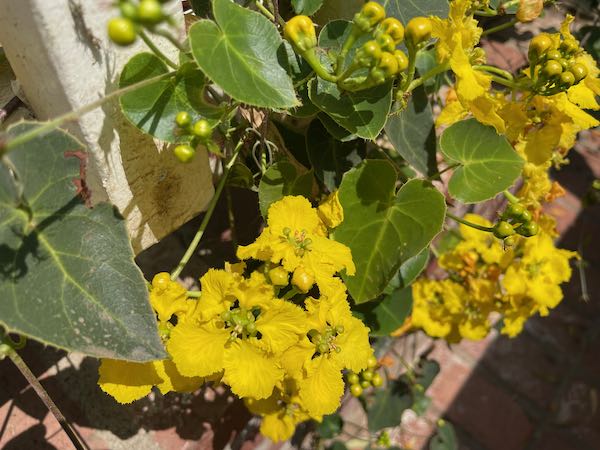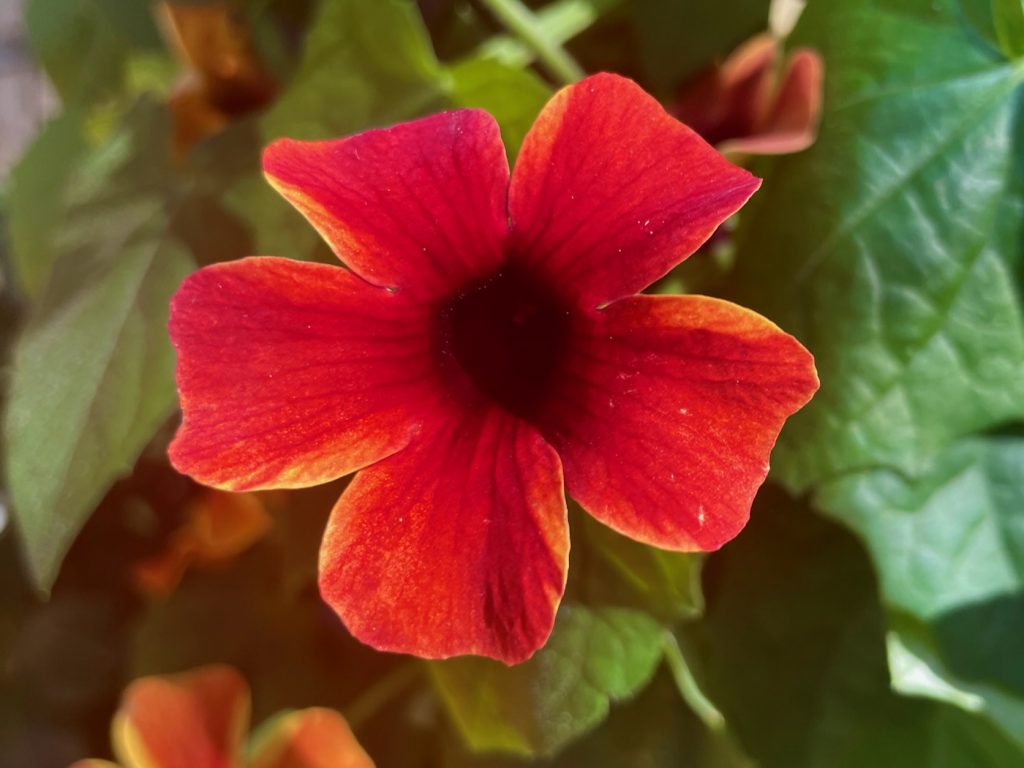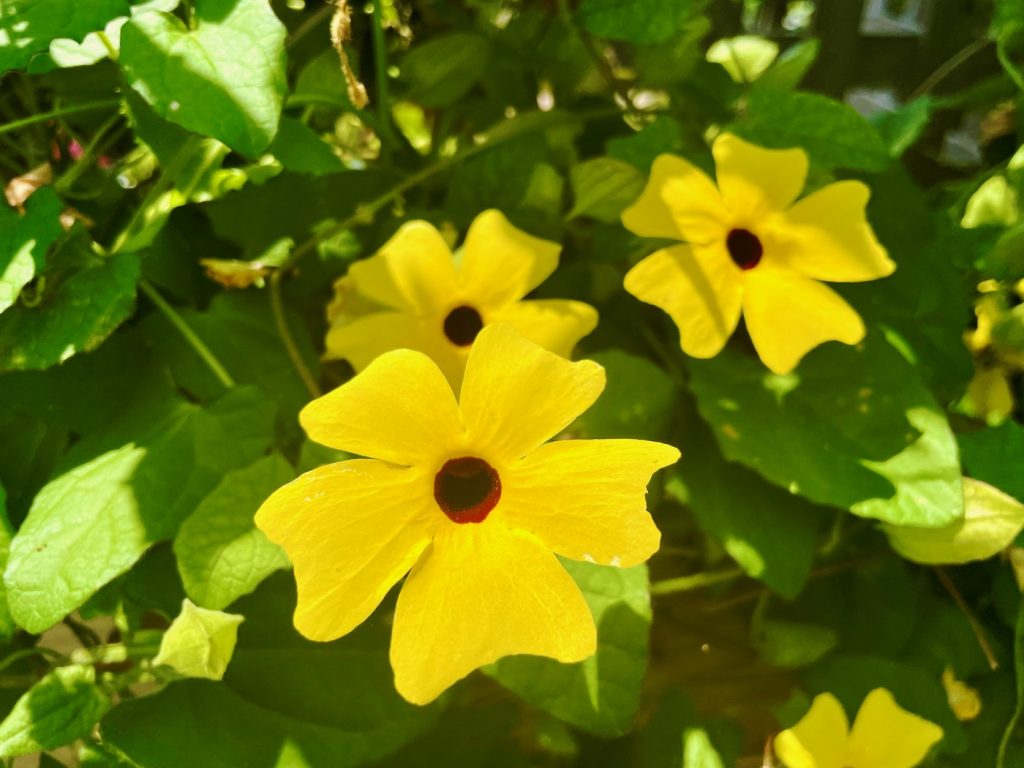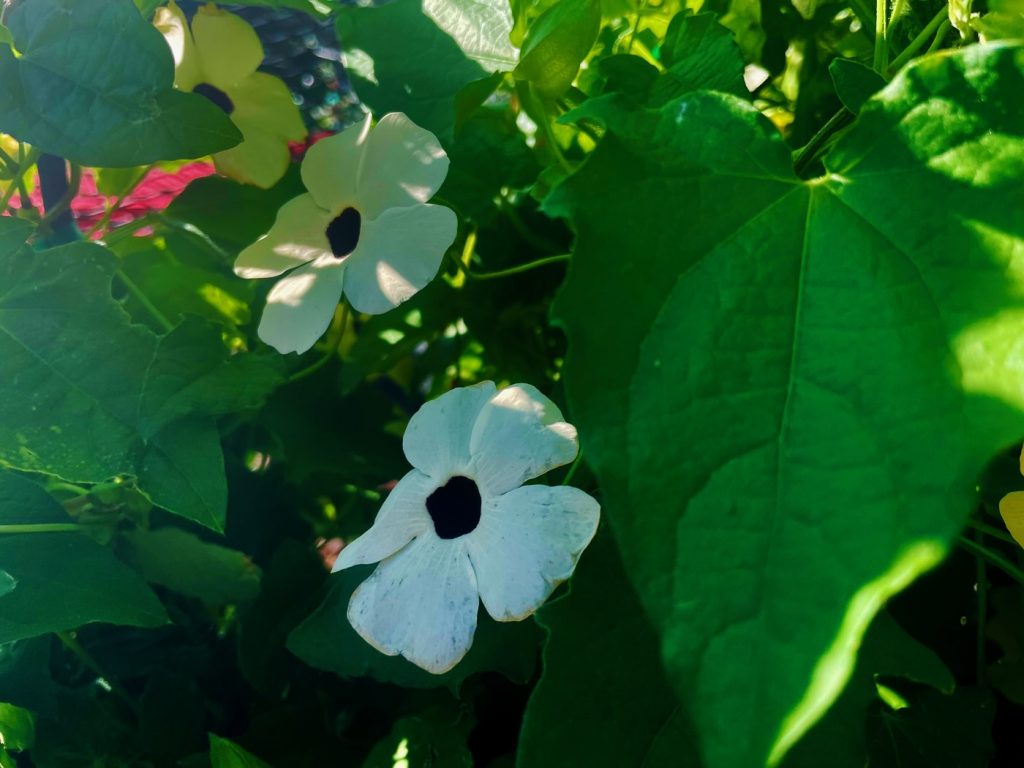Stigmaphyllon ciliatum is a tropical vine from the Malpighiaceae family of plants. They also call it the Brazilian Golden Orchid Vine, Golden Vine, Orchid Vine, or Butterfly Vine. Other synonyms for Stigmaphyllon ciliatum include Banisteria ciliata, Banisteria glauca, or Banisteria nitida.
It is native to Central and South America. Joseph Banks (1743-1820) described this plant from Brazil, in 1768 while traveling with Captain James Cook, visiting Brazil, Tahiti, New Zealand, and Australia. The name ciliatum is due to the eyelash-like hairs on the leaves.
Stigmaphyllon ciliatum can grow to 15ft or 5m high, and it is fast-growing. It flowers in late spring or early summer. The flowers are bright yellow and orchid-like. The green leaves are heart-shaped and have long hairs.

How to grow Stigmaphyllon ciliatum:
Light Requirements: Stigmaphyllon ciliatum performs best when grown in full sun to partial shade. It requires several hours of direct sunlight each day to promote healthy growth and abundant flowering. When selecting a planting location, choose an area that receives adequate sunlight based on your specific climate.
Soil Requirements: This vine prefers moist, fertile, and well-drained soil. Ensure the soil has good drainage to prevent waterlogging, which can lead to root rot. If the soil in your garden is heavy or compacted, amend it with organic matter such as compost or well-rotted manure to improve its texture and fertility.
Watering: Stigmaphyllon ciliatum has moderate water needs. Water the vine regularly to keep the soil evenly moist but not overly saturated. Avoid allowing the soil to dry out completely between watering sessions, as this can stress the plant. However, be cautious not to overwater, as excessive moisture can also lead to root problems. Adjust the frequency of watering based on the specific environmental conditions and the moisture retention of your soil.
Propagation: Stigmaphyllon ciliatum can be propagated from both seeds and hardwood cuttings. To collect seeds, allow the seedpods to dry and turn brown on the vine. Once dry, gently remove the seeds and store them in a cool, dry place until you are ready to plant them. Hardwood cuttings can be taken from mature stems during the dormant season. Dip the cut end in a rooting hormone and plant it in a well-draining rooting medium. Provide the necessary care to encourage root development.
Frost Protection: Stigmaphyllon ciliatum is not frost-hardy and is sensitive to cold temperatures. It can tolerate mild frosts down to approximately 29ºF or -2ºC. If you live in a region with cold winters, consider growing this vine in containers so that you can easily bring it indoors or provide protective coverings during freezing temperatures. Alternatively, you can grow it as an annual or in a greenhouse.
Pests and Diseases: Stigmaphyllon ciliatum is generally not prone to serious pest or disease issues. However, it can occasionally be affected by common garden pests such as aphids or mealybugs. Regularly inspect the plant for any signs of pest infestation and take appropriate measures, such as using organic insecticidal soap or introducing beneficial insects, to control the problem. Additionally, ensure good air circulation around the plant and avoid overwatering to prevent the development of fungal diseases.
Pruning: Pruning is not necessary for Stigmaphyllon ciliatum unless you want to shape or control the size of the vine. If desired, prune the vine in late winter or early spring before new growth emerges. Remove any dead, damaged, or crossing branches to maintain a tidy appearance and promote healthy growth.
In summary, Stigmaphyllon ciliatum is a stunning climbing vine that thrives in warm and tropical regions. By providing the vine with the right growing conditions, including proper sunlight, well-drained soil, and regular watering, you can enjoy its beautiful foliage and vibrant flowers. Remember to protect the plant from frost if necessary and keep an eye out for potential pest or disease issues. With a little care and attention, Stigmaphyllon ciliatum can thrive and add a touch of natural beauty to your garden or landscape.



